The churches of Naples are an immense heritage. Visit Italy invites you to discover the 20 unmissable churches in the city: the cathedral where the blood of the saint contained in an ampoule, San Gennaro, melts up to three times a year, but also the old church of San Gregorio Armeno where the liquefaction of the blood of Santa Patrizia takes place on August 25th and every Tuesday. The basilica of San Lorenzo lent to politics, for centuries the site of meetings of the city parliament, and the monastery of Santa Chiara celebrated in stories and songs, which puts aside the seclusion of the Poor Clares and welcomes the wounded and infirm during World War II.
And again the churches that act as the pantheon of the Angevin and Aragonese sovereigns, the deconsecrated chapels entrusted to the care of third sector associations and even the legend of Dracula's tomb which is supposedly hidden in the monumental complex of Santa Maria La Nova. The history of the thousand churches of Naples is intertwined with the history of the city, made up of rebellions and uprisings, almost as if to constitute a single religious and political fabric. In this context, Visit Italy invites you to discover the 20 unmissable churches of the immense Neapolitan heritage.

The 20 churches in Naples that you must see and know
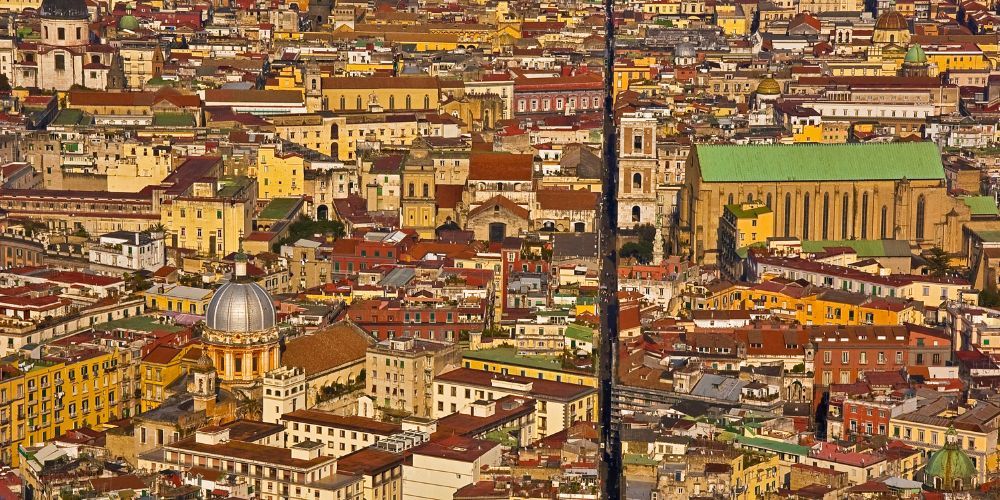
Monastery of Santa Chiara viewed from San Martino
There are many churches and buildings of worship in the historic center of Naples, which with its thousand-year history has spanned the entire development of Christianity. There are early Christian, medieval, Gothic and Baroque, Renaissance and neoclassical churches, which contain stories that are a mix between faith and pagan credulity, fueling the magic of the belly of Naples. Here we will tell you about 20 churches in Naples, but by wandering around the city you will be able to discover many others, each with its own history or legend.
As with the church of the Souls of Purgatory in via Tribunali, where the so-called "pezzentelle" souls are venerated, those who did not have important ancestors and worthy burial places, so every Neapolitan family could adopt its own "capuzzella" (skull) of anonymous and cure it. A very ancient veneration, which dates back to the "lari" of Roman times, the protective deities of families, and which is linked to the Fontanelle Cemetery in Sanità district, an ossuary with the same function of caring for the unknown "capuzzelle".
It also stands out how in the historic center of Naples many churches are very close to each other, sometimes facing each other almost as if they were challenging each other to win over the faithful. Even the largest churches are close to each other, such as Gesù Nuovo and Santa Chiara, the basilicas of San Lorenzo and San Paolo in the upper decumanus, in Piazza San Gaetano, the Duomo and the Girolamini. Even the monumental church of San Francesco da Paola in Piazza del Plebiscito is close to that of San Ferdinando in the adjacent Piazza Trieste e Trento, also known for being the church of the Artists.
20. Church of Gesù Nuovo

Obelisk and, on the right, church of Gesù Nuovo
We start from Spaccanapoli, coming from via Toledo, to begin the tour to discover the 20 churches of Naples that are absolutely worth visiting. In the center of Piazza del Gesù Nuovo, dominated by the obelisk of the Immaculate Conception, there is the seventeenth-century Church of Gesù Nuovo, a masterpiece of Neapolitan baroque which houses frescoes by Luca Giordano, Solimena, de Ribera, as well as stuccos and gold and frescoed chapels of great value.
Residence of the Sanseverino nobles, the building was expropriated by King Ferdinand I of Aragon following a conspiracy and entrusted to the Jesuits, who made it a sumptuous and modern church, very different from the Basilica of Gesù Vecchio in nearby Via Giovanni Paladino. The church somewhat marks the history of the Society of Jesus, first in great expansion, then expelled from the kingdom (the management of the church passed to the minor Franciscans) and then readmitted. Today it houses the remains of San Giuseppe Moscati, the doctor of the poor.
The Church of Gesù Nuovo brings with it many esoteric mysteries. The "bugne" - the particular pointed stones of the facade - in fact point their points outwards and not inwards, in contrast with what the superstitions of the time imposed to defeat bad luck, but perhaps the history of the conspiracy influenced this choice. Furthermore, some of the "bugne" hide a secret score which, read from bottom to top and from right to left, shows a work by Johann Sebastian Bach.
19. Monastery of Santa Chiara
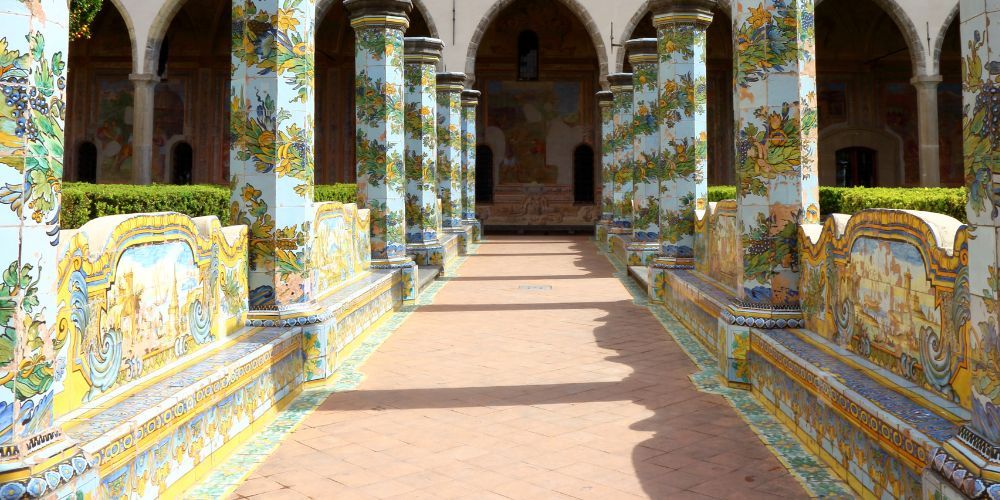
Majolica Cloister in Santa Chiara monastery
Beloved by Neapolitans, Santa Chiara is much more than a church and not only due to the enormous size of the monastic complex (from the entrance to the apse it is approximately 130 meters long!). Opened for worship in 1340, it was built in Gothic style with Provençal influences evident in the façade, where the large central rose window stands out, and inside where there are 20 chapels. Detached from the main body there is then, as a guardian, the bell tower.
The pride of the complex is the majolica cloister, a splendor of ceramics and pillars decorated with majolica that accompany the vegetable gardens among colors and shadows. The cloisters of the complex are four in total, there are three others dedicated to monastic life and the Franciscan convent, and then the library, the Museum of the Opera di Santa Chiara, the refectory and even an archaeological excavation area for the discovery of a thermal area from the Roman.
45 meters high and 40 meters wide, the mass of Santa Chiara stands out from every hilly panorama of Naples, such as from the terrace of San Martino. The bombings of August 1943 seriously destroyed the complex and many frescoes were destroyed, including those by Giotto. Then the reconstruction and reopening in 1953, post fata resurgo is his motto and moreover the same song dedicated to the Monastery says it clearly: "... I think of Naples as it was and of Naples as it is".
18. Basilica of San Domenico Maggiore
After leaving Santa Chiara and walking about fifty meters along Via Benedetto Croce, you arrive at Piazza San Domenico Maggiore. We are in the center of Naples, with the obelisk dedicated to the saint in the center and on the sides via Mezzocannone with the "Federico II" University, the most famous pastry shops and pizzerias and in an open space the statue of the Nile, a marble from the Roman era (II -3rd century AD) which recalls the colony from Alexandria in Egypt that settled here.
The basilica of San Domenico Maggiore closes the opposite side of the square but the surprising thing is that it overlooks it with the apse, accessible via a staircase. The main entrance is in fact on Vico San Domenico, with a façade that is all in all secondary and from the late eighteenth century. Built between 1283 and 1324 at the behest of Charles II of Anjou, the basilica was the seat of the Dominicans in Naples and St. Thomas Aquinas studied and taught here, the cell in which he lived is still visible. Enriched with grandiose frescoes from the 17th century, it was also the pantheon of the Aragonese kings.
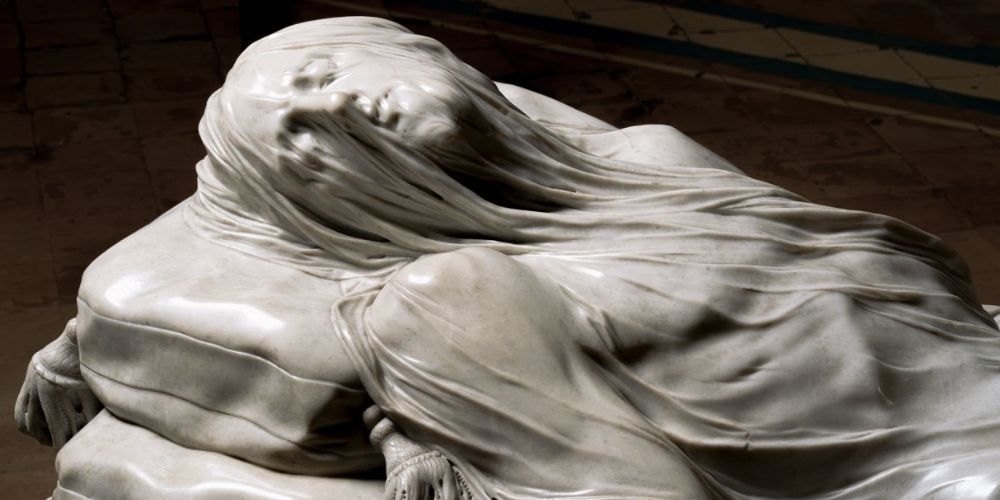
Chapel of the Princes of Sansevero, Veiled Christ
A stone's throw from San Domenico Maggiore there is also the Chapel of the Princes of Sansevero, where the wonderful Veiled Christ is kept. Not a church in the strict sense, but a noble palace with many artistic/religious testimonies and the invention workshop of Prince Raimondo di Sangro, philosopher and naturalist, alchemist and military engineer, who spoke 8 languages and built the famous "anatomical machines".
Be amazed by the magnificence of the Veiled Christ17. Church of San Gregorio Armeno
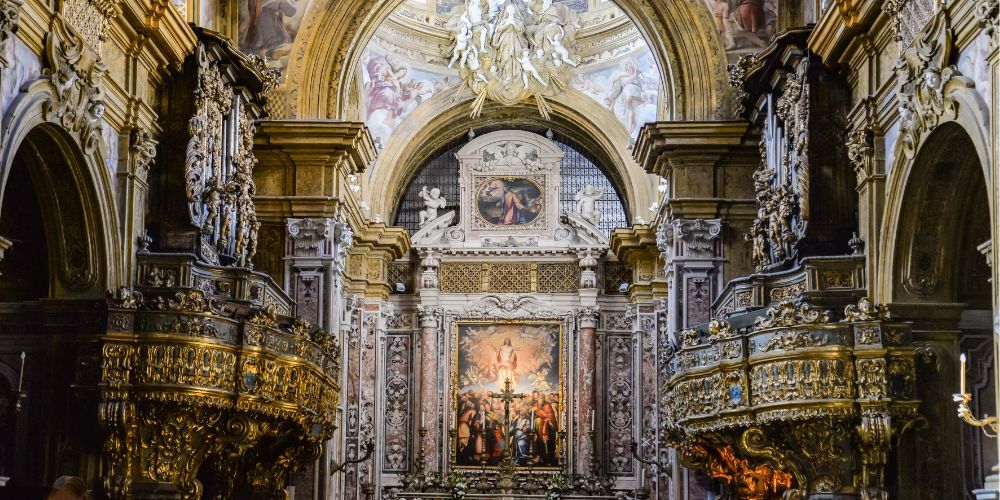
San Gregorio Armeno, inside
Not just nativity scenes, in San Gregorio Armeno there is also a very ancient church that looks east and draws legends and mystical atmospheres from there. The foundation of San Gregorio Armeno dates back to the 9th century and is due to the will of the nuns of San Basilio, who brought to Naples some relics of the Armenian patriarch Gregory - a proto-Christian of the third century - including the skull kept in a silver shrine.
The remains of Saint Patrizia also rest in the church, who is said to be a descendant of the emperor Constantine and also protector of Naples like San Gennaro and 50 other canonized people. Yes, because in Naples there are 52 patron saints of the city! And Saint Patrick is also the creator of the miracle of blood liquefaction, it happens every Tuesday and on August 25th, the day on which the saint is celebrated.
16. Basilica of San Lorenzo
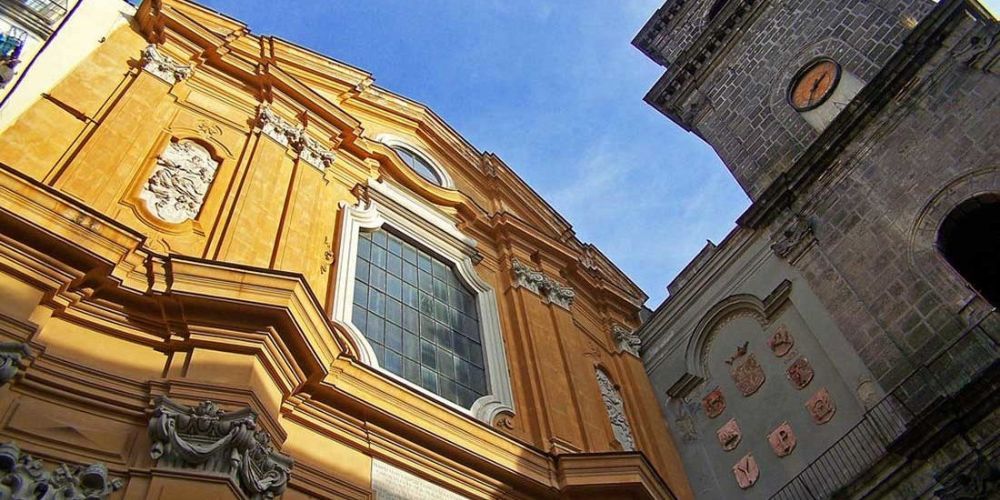
San Lorenzo, photo by FAI
San Lorenzo is the church that no traveler can miss seeing among the 20 unmissable churches in Naples. To say how important the Basilica of San Lorenzo is in the history of Naples, it is enough to remember that Petrarca stayed there in 1343 and reported the tsunami that destroyed the city. Even before that, on Holy Saturday 1334, Boccaccio met here Fiammetta, his muse and daughter of King Robert of Anjou. But the importance of the basilica also derives from the "seats", a sort of city districts which from the 13th to the 19th century met here to take care of administrative and judicial affairs.
Established in 1270 by Charles I of Anjou and built in French Gothic style, San Lorenzo is one of the oldest and most glorious churches in Naples, renovated many times over time and embellished with a splendid cloister since the 18th century. Inside there is today an interesting archaeological excavation area, in fact remains of the ancient Roman forum have been found. The political vocation, even before the "seats", seems to be the destiny of the place.
15. Basilica of San Paolo Maggiore
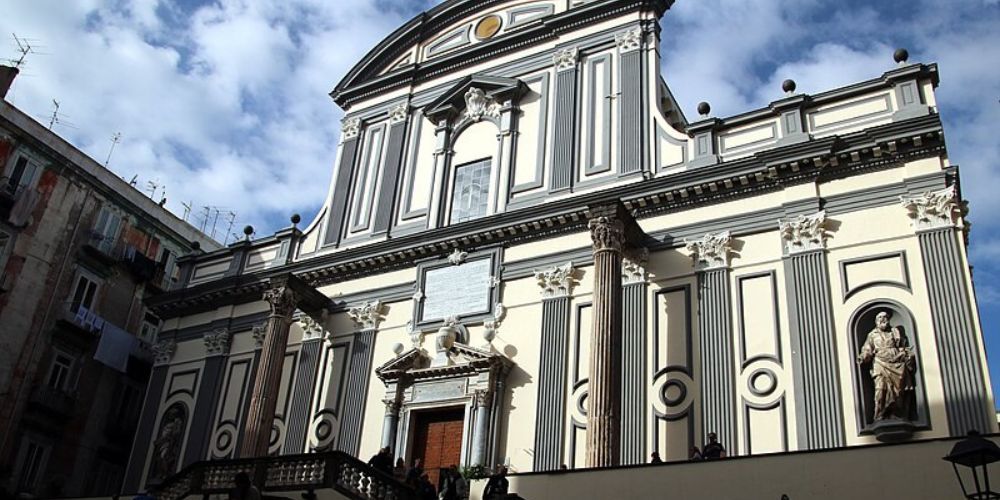
San Paolo Maggiore (by wikipedia)
In the same Piazza San Gaetano where San Lorenzo is there is another major basilica, consecrated to San Paolo. From a later period but with a much more eye-catching façade and a large double ramp access staircase, San Paolo Maggiore is an admirable example of Neapolitan Baroque. It was built on the remains of a Roman temple, of which two Corinthian columns are visible today on the facade.
Among the many works inside, the cycle of seventeenth-century frescoes by Massimo Stanzione on the ceiling of the central nave stands out. Unfortunately the church was heavily damaged by the bombings of 1943 and many works were destroyed. Outside the church there is the little street that enters the bowels of Naples, in fact here the routes of underground Naples begin.
14. Santa Maria delle Anime del Purgatorio ad Arco, the Church of the “capuzzelle”
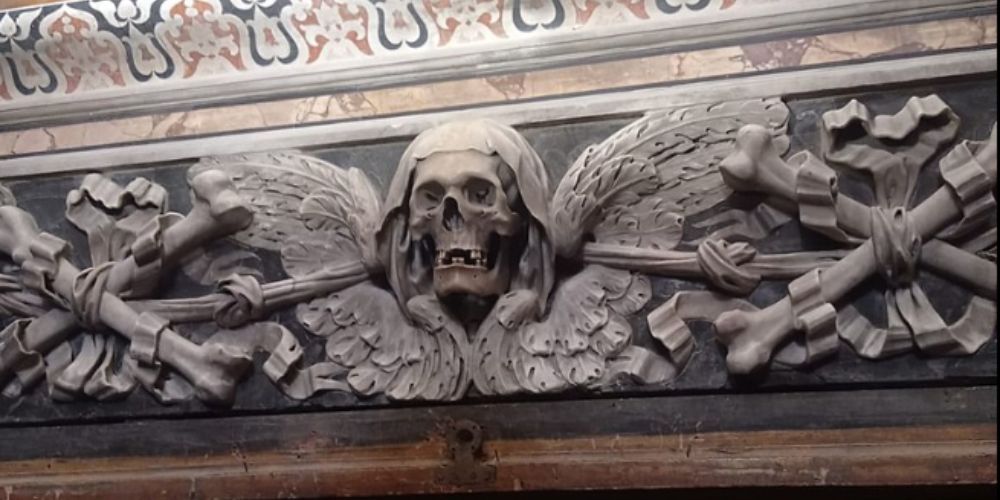
Skull with wings close the altar
If you continue to walk along the upper decumanus, today via Tribunali, you come across a real "gem", eerie for some but sincere for the Neapolitans: the church of the "anime pezzentelle" (poor souls). It is in fact dedicated to the souls in Purgatory and deserves to be included among the most mysterious and esoteric churches in Naples. It can be immediately recognized by the "capuzzelle", the sculpted skulls that dominate the small columns at the entrance.
In the crypt of this small church thousands of anonymous skulls are kept, but removed from the mass graves to which they would have been destined. Here the "capuzzelle" are instead cared for and practically adopted by a believer, who shines them and gives them a souvenir as if they were a loved one of the family. An ancient cult which in Naples also finds its expression in other churches, such as San Pietro ad Aram, and in the Fontanelle cemetery in the Sanità district.
13. Basilica of San Pietro ad Aram, or the Jubilee in Naples
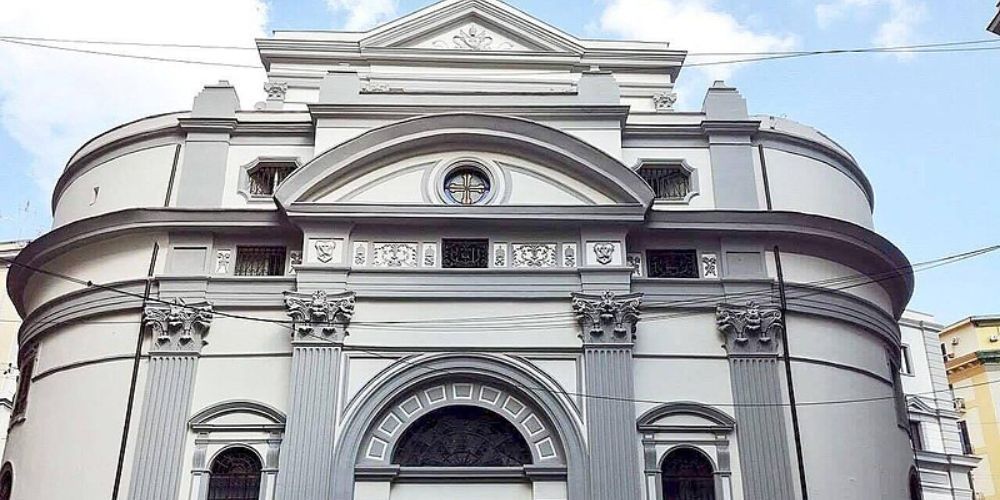
San Pietro ad Aram
If you go along Via Tribunali and Forcella, you almost arrive at Piazza Garibaldi. But first we come across a church with a beautiful 17th century neoclassical façade: it is the basilica of San Pietro ad Aram, in whose crypt the remains of an early Christian church were discovered. It is here that there must have been the legendary Ara Petri, the altar on which the first pope Saint Peter - passing through Naples on his way to Rome - baptized the saints Candida and Aspreno. The latter was then the first bishop of Naples and is the protector against headaches; legend has it that the name of aspirin derives from his name.
However, the story is certain that Catholic jubilees took place in Naples and precisely in the very ancient church of San Pietro ad Aram. It happened in 1526, 1551 and 1576, always one year after the official Jubilee in Rome. Pope Clement VII wanted them, thus avoiding the tiring (and expensive!) journey of Neapolitan faithful to Rome, but his successor Clement VIII abolished this privilege.
12. 20 churches of Naples, complex of Girolamini

Girolamini (or San Filippo) Church
In the immediate vicinity of the Duomo and currently only partially open to visitors due to ongoing restoration work, there is a monumental complex of the Girolamini. Consecrated to the Nativity of Mary and all the saints, the church is known as the Domus aurea for the richness of its gold, marble and mother-of-pearl decorations.
It is here that there is one of the richest and most prestigious libraries in the world, with volumes of absolute rarity. It was born by will of San Filippo Neri and the community he had founded - the Oratorians - in the same year in which the church was built, in 1590. The Filipino fathers came from the community of San Girolamo della Carità in Rome, hence the name that distinguishes the entire complex. The heritage of frescoes and canvases is immense, with works by Luca Giordano, Guido Reni and Pietro da Cortona. In addition to the fabulous library, the complex houses the picture gallery and two monumental cloisters.
11. Basilica of the Annunziata Maggiore
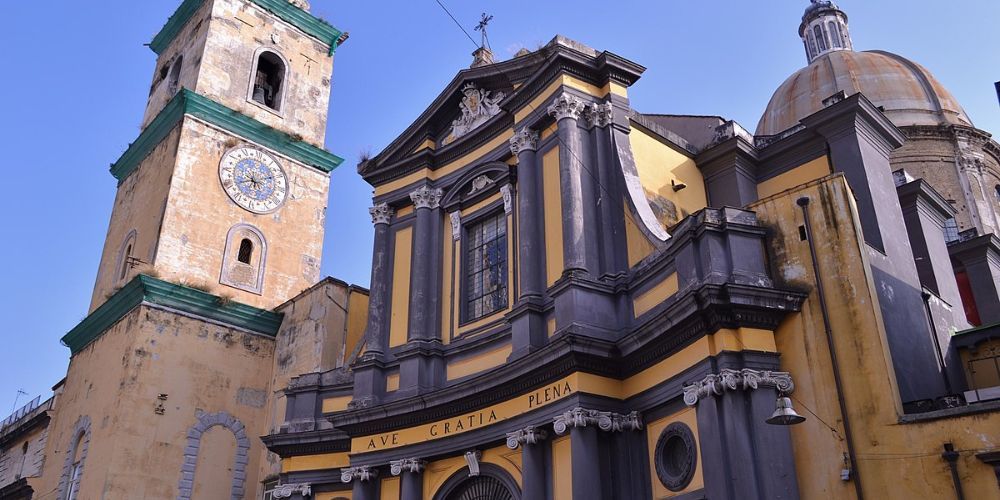
Basilica dell'Annunziata Maggiore
A short walk and from Largo Girolamini you take Via Forcella. Here there is a very ancient basilica, dated 1343, but subjected to various renovations over time, the last one in the 18th century by Luigi Vanvitelli (the architect of the Royal Palace of Caserta), who designed the current façade and created the 67 meter high dome. It is the basilica of the Annunziata Maggiore.
The church is part of a very large complex, which included a convent, a hospice for orphans and a shelter for young girls without families. However, the bulk of the spaces are occupied by the Annunziata hospital, still active in the center of Naples and specialized in obstetrics and gynaecology. It is here that the famous "exposed wheel" was established in 1600, where abandoned newborns were brought and which remained in operation until 1875.
10. Church of Santa Maria Egiziaca al Rettifilo (or Forcella)
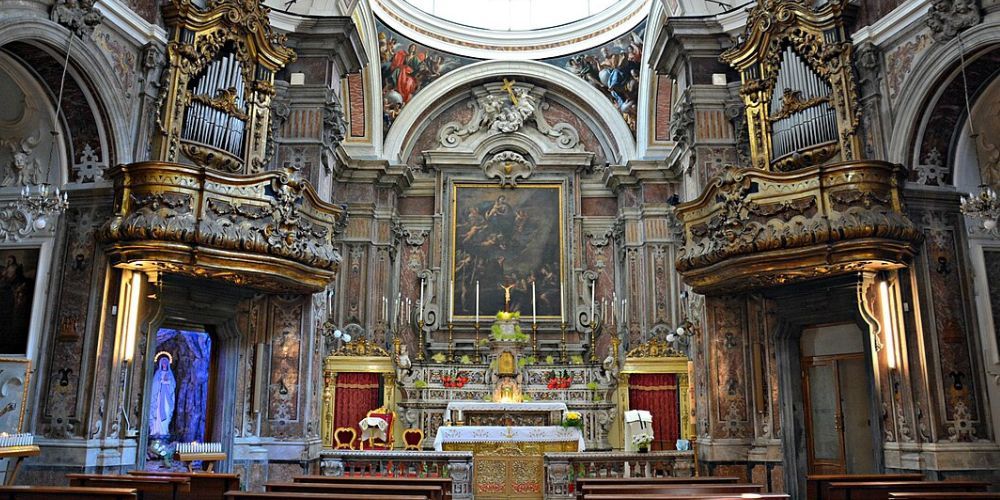
Santa Maria Egiziaca in Forcella (by wikipedia)
It is not superfluous to specify Rettifilo ‒ or the long artery with which the Neapolitans call Corso Umberto I ‒ because there are two churches dedicated to Santa Maria Egiziaca in Naples. This is the one that closes the street at an angle to the street that leads to Forcella and is a pearl of Neapolitan baroque, a small but full treasure chest of works of art, with frescoes by Luca Giordano, Andrea Vaccaro and Francesco Solimena. And the other church of Santa Maria Egiziaca? In Pizzofalcone.
Experience an emotion on Vesuvius, start from Naples9. Basilica of Santa Maria degli Angeli in Pizzofalcone
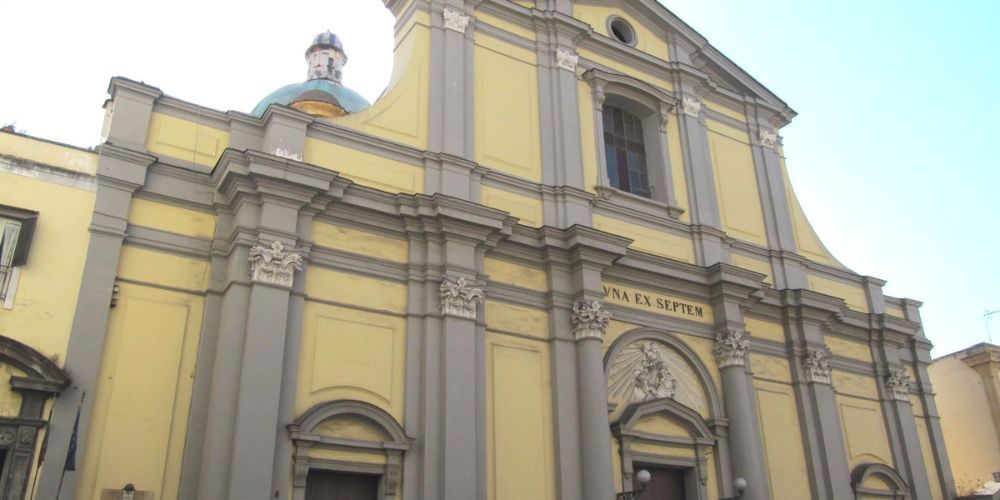
Santa Maria degli Angeli a Pizzofalcone (by wikipedia)
The Pizzofalcone hill can be reached by walking up from Piazza del Plebiscito, but if you want there is also an elevator, halfway up Via Chiaia, which takes you up and just a stone's throw from the Basilica of Santa Maria degli Angeli. It is a splendid seventeenth-century church with a Latin cross layout and three naves that is more worth a visit than the other church consecrated to Mary of Egypt. The cycle of frescoes and the narrative painting with a liturgical background that surrounds the entire building stands out in the basilica. And if you want know three secrets about the churches of Naples, click here.
Pizzofalcone and Quartieri Spagnoli, guided tour8. Church of SantʼAnna dei Lombardi

Sant'Anna dei Lombardi, Lamentation over the Dead Christ
If you descend from Pizzofalcone, you'll arrive at Monteoliveto by going up Via Toledo. It is here that the monumental area of SantʼAnna dei Lombardi is located, whose foundation dates back to 1411 and which also became a monastery and then a sort of autonomous micro-community. The church dedicated to the saint was built in the 16th century, the work of Domenico Fontana, the architect of Pope Sixtus V, but what makes the complex unique are the marvelous Renaissance chapels with finely sculpted marble, the splendid Sacristy frescoed by Giorgio Vasari and the Lamentation over the Dead Christ by Guido Mazzoni from Modena.
Discover the monumental church of Sant'Anna dei Lombardi7. Basilica of the Holy Spirit
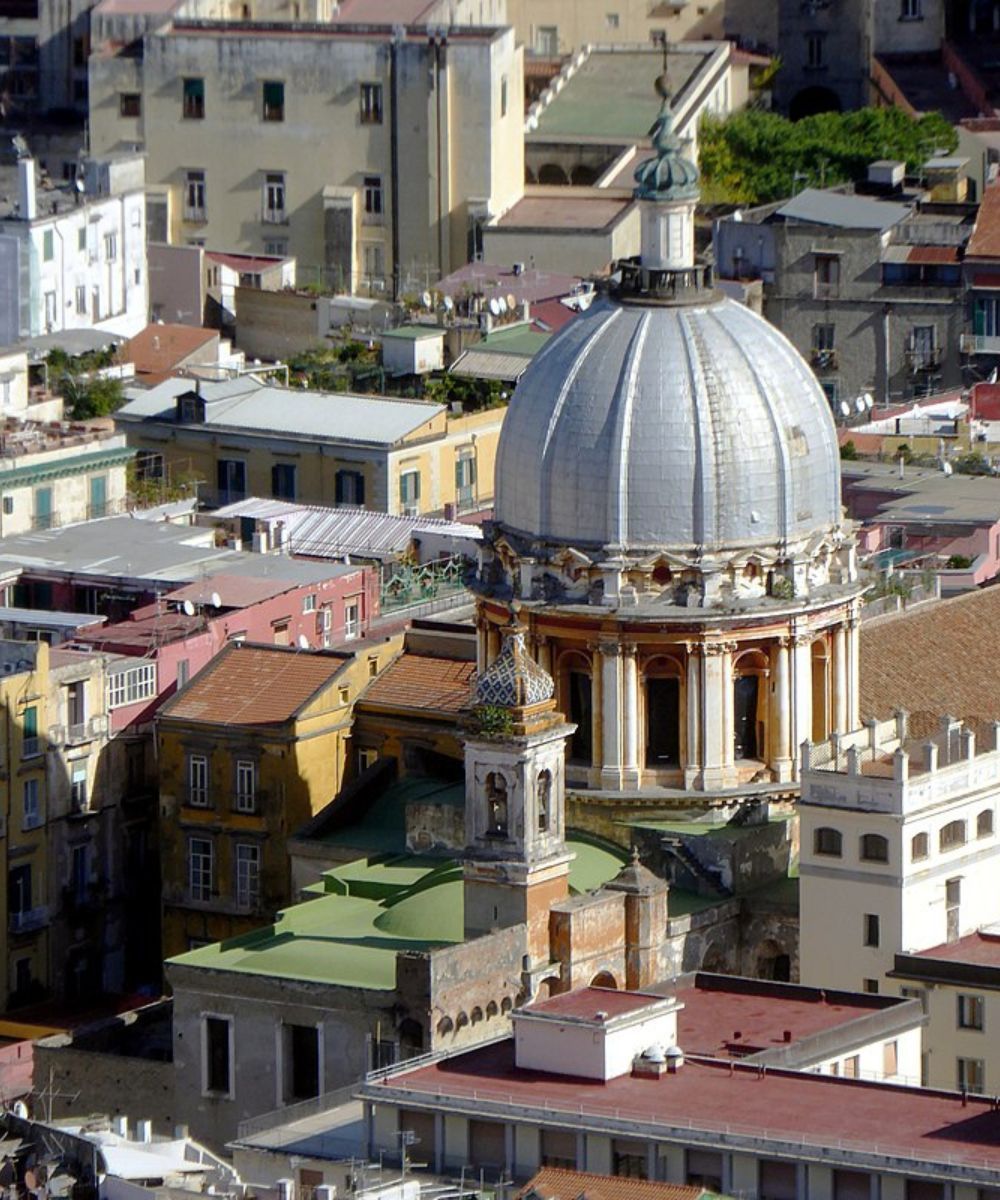
Basilica of the Holy Spirit, the dome
Along Via Toledo and almost halfway along the street you come across the Basilica of the Holy Spirit. The somewhat anonymous façade and the swarm of crowds lining the street hide it a bit from view, but this is a sumptuous expression of 16th century Neapolitan baroque, with a 70 meter high dome and a central nave 80 meters long. To admire it you have to go up high, from the terrace of San Martino you can fully grasp the size and elegance of the basilica and dome.
Visit the Royal Palace in Plebiscito square6. Certosa of San Martino
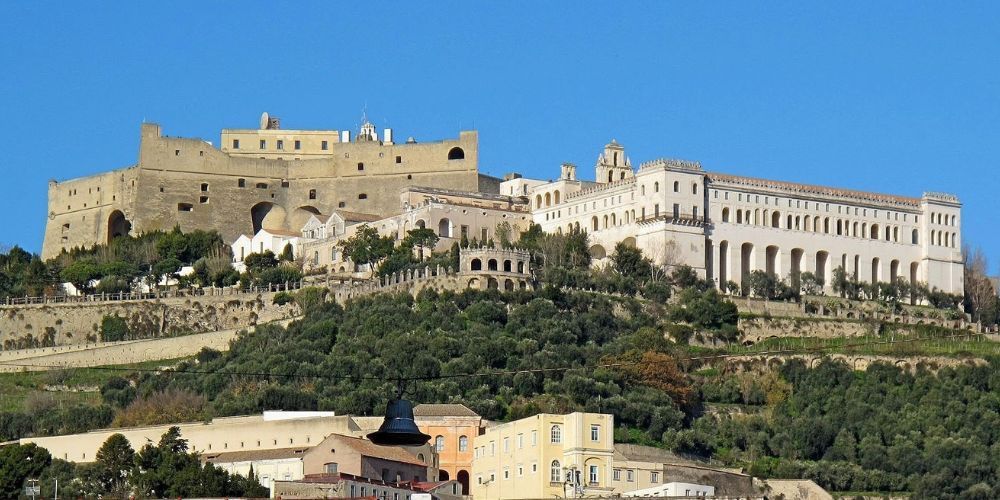
Certosa of San Martino and, on the left, Castel San'Elmo (by wikipedia)
We then go up to San Martino. With the central funicular from Via Toledo but also with the Montesanto funicular behind the Basilica of the Holy Spirit (we are in the Spanish Quarter), a few minutes and we arrive in the upper part of the city called as Vomero. We are in the most panoramic place in Naples, where you can see the most beautiful churches and domes of the city, the historic center and the gulf and in the centre, perfectly cut, Spaccanapoli.
The complex of San Martino is much more than a historic Charterhouse, founded in 1325 and dedicated to Martin of Tour. It occupies over 100 rooms, three cloisters and a courtyard in which you can appreciate the collection of historic carriages, hanging gardens that look to the south and to the sea and the famous Cuciniello nativity scene. There are two churches: one of the Women and the main one with a single nave and 8 chapels.
5. Church of San Giovanni a Carbonara
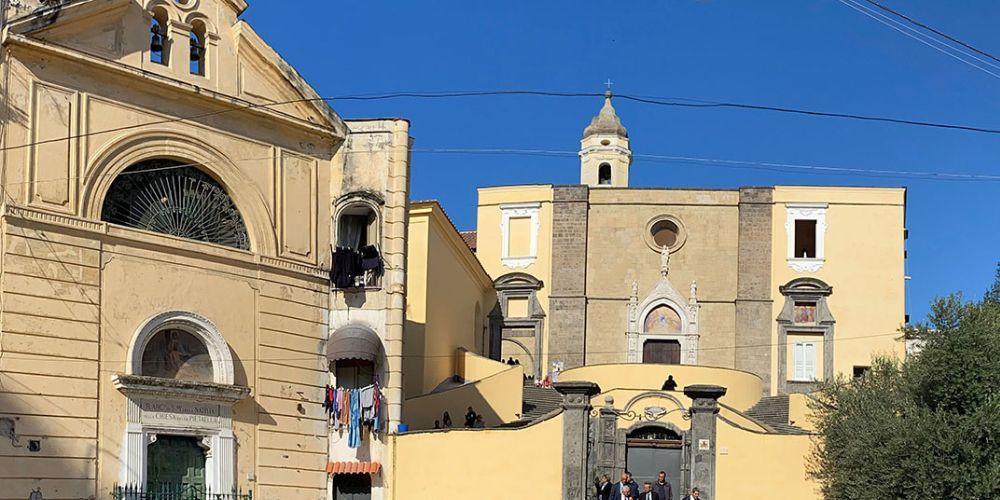
San Giovanni a Carbonara
Let's return to the heart of Naples to discover the church of San Giovanni a Carbonara, one of the 20 most beautiful churches in Naples and recently returned to the city, after the restoration work started in 2019 which dusted off the Gothic and then Renaissance vestiges. Built between 1343 and 1418, this church was the pantheon of the last Angevin kings, then over time it expanded into a large complex managed by the Augustinian fathers. Thanks to the superb staircase by the architect Sanfelice, the church was connected in the 18th century to the underlying church of Consolazione.
Discover the top 10 best museums of Naples4. Basilica of Santa Maria della Sanità

Santa Maria della Sanità (by wikipedia)
From via Carbonara, after passing the central via Foria, you enter the Sanità district. It has always been one of the historic and liveliest districts of Naples and right in Piazza Sanità stands the Basilica of Santa Maria and the catacombs of San Gaudioso below. Built at the beginning of the 1600s, the church - which the Neapolitans also call San Vincenzo - is due to the genius of the Dominican architect Fra Nuvolo, who, in contravention of every style of the time, chose green and yellow majolica for the exterior.
Even less conventional is the choice of a circular plan for the interior of the church, with columns arranged in a Greek cross and the raised presbytery, so as to keep access to the crypt intact. Seventeenth-century Neapolitan painting, with frescoes by Luca Giordano and Andrea Vaccaro, embellish the basilica. In the crypt there are the catacombs of San Gaudioso, a bishop who was shipwrecked in Naples and lived here in the 5th century.
3. Basilica of the Incoronata Madre del Buon Consiglio
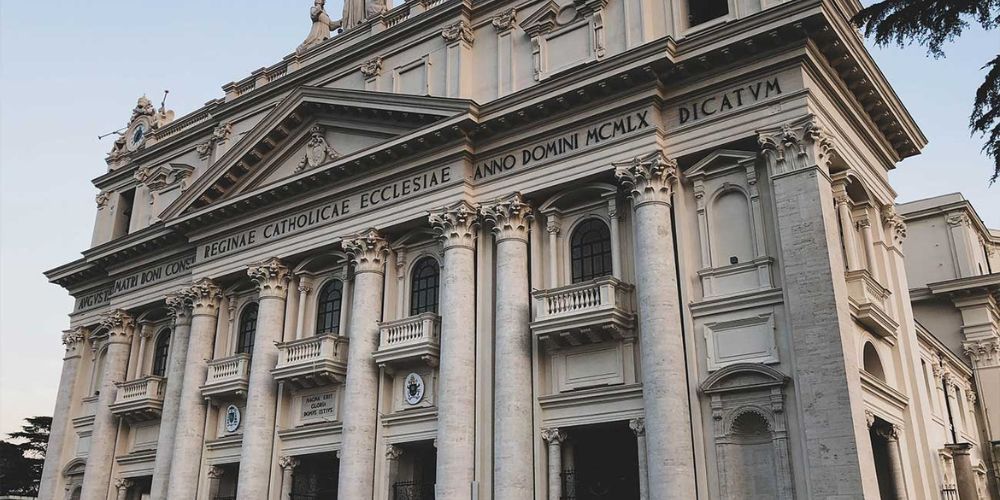
Basilica dell’Incoronata Madre del Buon Consiglio
From the Sanità there is a lift that goes up almost to Capodimonte. Here there is one of the most modern churches, in perfect neoclassical style, but also among the most loved in Naples: the Basilica of the Incoronata Madre del Buon Consiglio. It was inaugurated in 1960 and at first glance the deja-vu is immediate, the basilica is also called the "little Saint Peter" due to the inspiration of the architects who conceived it. Inside the basilica there is also access to the catacombs of San Gennaro, an ancient cemetery area that dates back to the 2nd century AD.
Catacombs of San Gennaro, guided tour2. Basilica of San Francesco da Paola
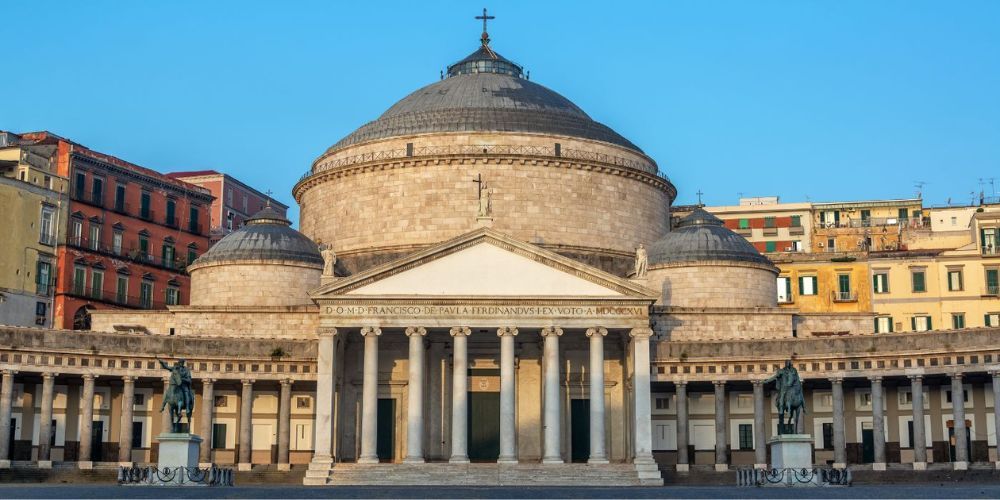
San Francesco di Paola viewed from Royal Palace
Same neoclassical inspiration for the Royal Pontifical Basilica of San Francesco da Paola, only this time the inspiration comes from the Pantheon in Rome. We are talking about the church that embraces the central Piazza Plebiscito with its monumental arched colonnade and the prowess of the largest dome in the city, which can be admired perfectly from the Pizzofalcone hill above.
It is a recent church with a circular plan, built in the first half of the 19th century after the demolition of old infamous buildings decided by Gioacchino Murat and the opening of a large square. Today it is very present in Neapolitan life, it is unthinkable to visit the city without passing through here, which also overlooks the Royal Palace and, on the side, the San Carlo Theatre. In the adjacent Piazza Trieste e Trento, there is the church of San Ferdinando or the artists' church.
1. The Cathedral of Naples
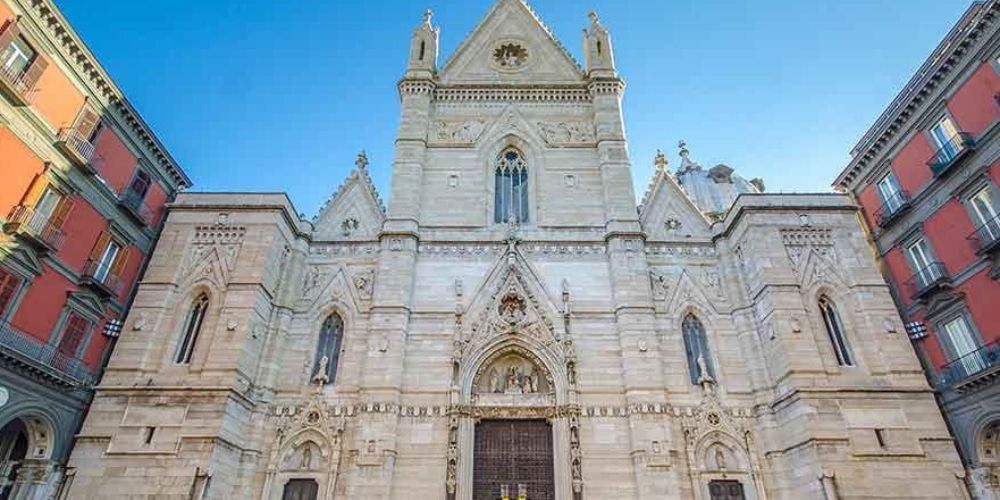
The cathedral of Naples
We finish the tour of the 20 most beautiful churches in Naples with the cathedral dedicated to the Madonna Assunta and built between the 13th and 14th centuries (the consecration took place in 1314). Inside it integrates the basilica of Santa Restituta, the oldest in Naples, which dates back to the 4th century AD. In the Cathedral there is also the fabulous Chapel of the Treasure of San Gennaro, whose magnificence is equal to the fame of the holy martyr, who was beheaded in the year 305 together with some of his followers.
The miracle of the blood of San Gennaro, kept in an ampoule, which melts three times a year, is one of the most intense moments of the faith and life of the Neapolitans. And for those who don't know, the stone on which San Gennaro was beheaded is kept in the Sanctuary of San Gennaro in Pozzuoli, built on the place where he was martyred, and in conjunction with the miracle of the liquefaction of the blood, the stone kept in a shrine blushes with blood of the saint.
About the author
Written on 28/02/2024



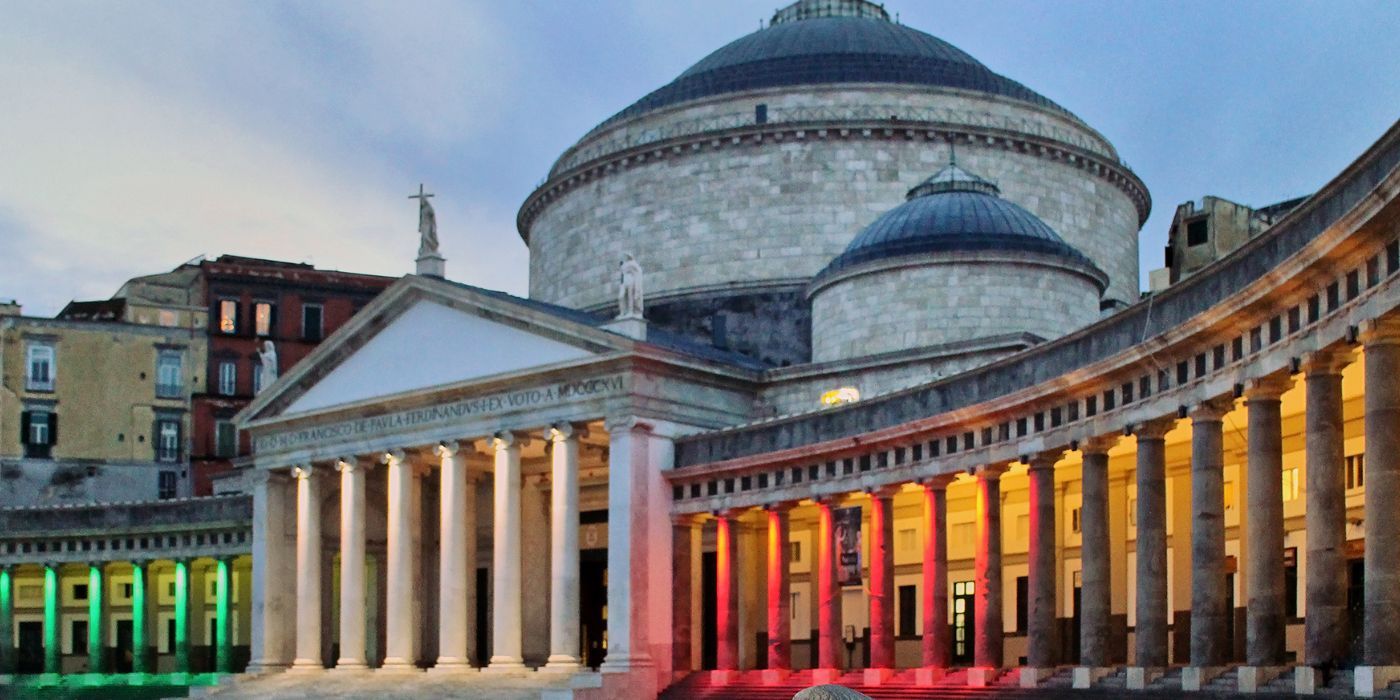
Antonio Angione
A thousand colors, a thousand churches. The history of religious buildings in Naples blends faith and civil life. Discover the 20 unmissable churches